An important part of a journalist’s job is interviewing people for stories. When the story involves a person, it is imperative to have an interview recorded in audio and video formats. The best camera for interviews will depend on your specific needs and budget, but there are some factors that you should consider when choosing the best camcorder for interviews. In this article, we will answer a frequently asked question: “What is the Best Camera for Interviews?”.
Best Video Camera for Interviews in 2022
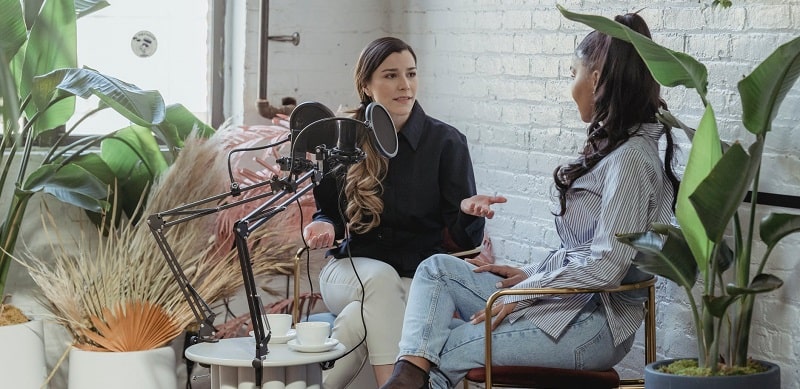
In order to find out which camera is going to be right for you it all depends on what your needs and requirements. It also depends on where you plan on using them as well as how much money that you want to spend because some of the interview video cameras can be really expensive.
Top 3 Camcorders for Interviews
Sony Handycam FDR-AX53 – One of the best camcorder for interviews on the market right now because it incorporates advanced image sensors, allowing you to get clear shots with amazing details. The autofocus system also works really quickly so that you will be able to capture even the most subtle details.
Panasonic HC-V770MkII – Great camera with full HD 60p resolution. It is relatively small in size and has a convenient flip screen.
JVC GY-LS300CHU – Best camcorder for interviews in low light. The camera features an internal 12x zoom lens and can also be used to capture images using interchangeable lenses, making it one of the best cameras out there on the market right now.
Sony Handycam FDR-AX53 Review

This is one of the best camcorder for interviews that you can find right now. It has really advanced image sensors and allows you to capture all kinds of details, even ones which are very subtle.
The autofocus system also works incredibly fast so there won’t be any missed opportunities when it comes time to record something important or great.
Another great thing about this camcorder is that it features a really large sensor which will give you excellent quality even in low light. It has also advanced image stabilization system, so there won’t be any blurry shots or anything like that because of the shaking hands.
This camcorder comes with some really amazing and high tech lenses as well as a large and bright viewfinder, so it will be really easy for you to see exactly what is inside of the frame.
Panasonic HC-V770 MkII Review

This is a really good camera to use for interviews. It has full HD 60p resolution which means that you will be able to get clear shots with amazing details, and the autofocus system works incredibly fast so there won’t be any missed opportunities when it comes time to record something.
In addition it also features a convenient flip screen which allows you to see exactly what is in the viewfinder, so it’s kind of like using your own eye as a camera.
One more good feature about this camcorder is that it incorporates advanced image sensors which will allow you to get clear shots with amazing details and clarity even if there isn’t very much light where you are recording at.
This camcorder is also very small and lightweight so you can easily take it with you anywhere.
JVC GY-LS300CHU Pro Camcorder Review

This is a really great camera for interview videos. It’s not the one of most affordable ones on the market, but it has some good features that you would normally expect from more expensive products out there.
One thing about this camcorder which makes it stand out among other similar ones is its interchangeable lenses and ability to use different lens adapters on it. This camcorder also has an excellent image sensor which allows you to capture all kinds of details, even ones that are really subtle so everything will be recorded with great quality.
The autofocus system is another thing about this product which makes it really valuable since the camera can focus on whatever you want in just a matter of milliseconds.
It also has a really large digital viewfinder with an amazing resolution which is going to allow you to see everything in the frame with perfect clarity, so all your shots will be always in focus and sharp.
Which are the best video cameras for interviews for 2022?
How do you make sense of the ratings, recommendations or reviews? Is there a ‘top’ camera?
It depends on what you need to do, how experienced you are and how much you want to pay. Is it just talking to camera? Is it for chat shows? How big is your budget?
In this article, we’ll select 9 products, each of which can solve your interview shooting needs. Plus, we’ll list our top 3 picks. We’ll look at their advantages and disadvantages.
- Sony HXR-MC2500E Camcorder – EDITOR’s PICK
- ORDRO Real 4K Ultra HD – EDITOR’s PICK
- YEEHAO 24 MP Full HD Camcorder – EDITOR’s PICK
- Seree 2.7K Video Camera
- Sony A6000
- Kenuo Full HD
- Crosstour Wi-Fi Action Camera
- Canon 5D Mark IV
- PowerLead Puto
What is the best camera for interviews?
Very much depends on what, how and where you are shooting and what other equipment you have.
It would be great if you could try any camera out for free on a real project. That’s not practical and this review took us 60 hours of research.
Decide your needs
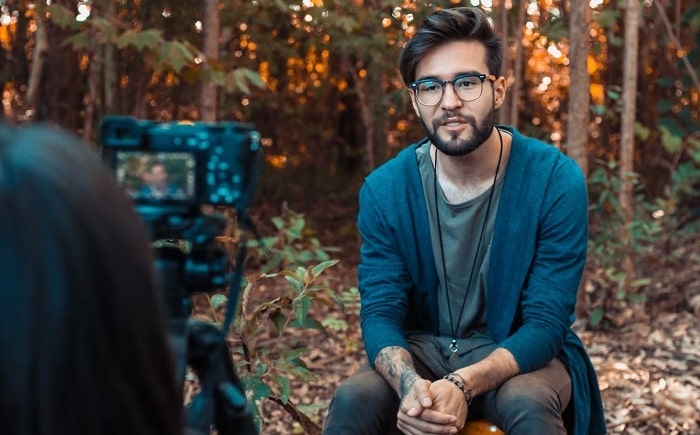
You may be doing a chat show or a talk show, your interview might be a live stream, or you might be pre-recording for post production on editing packages.
The better the quality you start with, the easier it will be to get a good result.
- Mobile Phones have some fundamentals that limit their usefulness.
“Prosumer” Cameras designed for skilled amateurs or semi-professionals. These are stills cameras that can also record video and audio or camcorders. - Broadcast Cameras priced beyond what we are looking at.
- Digital Film Cameras, which are not designed for interviews, especially since some don’t have any audio.
Beware Buzzwords
The folks marketing cameras occasionally get a little too creative.
So, with all ratings, reviews or recommendations, use your judgment. Just because something is apparently popular, or a top recommendation, or has some buzzword feature, it might not be right for you.
- It needs to handle motion, including when the lights are poor. There’s no ‘long exposure’ option and low light can produce noisy signals which are hard to compress when sending the result to YouTube or some other internet-based platform.
- It needs to record at a minimum high-quality stereo sound. Audio issues can be hard to fix later.
- If it is being used handheld, it needs to be comfortable and easy to use, with the right ergonomically designed controls for the camera operator.
TOP RATED VIDEO CAMERAS FOR INTERVIEWS
Now let’s look in detail at the best video cameras for interviews.
1. Sony HXR-MC2500E Camcorder
Best for Real Video Professionals

This is a dedicated HD or SD camcorder, with a design like bigger Sony Broadcast models. It uses a 1/4-inch Exmor R CMOS sensor with 6.59 MP and has both an eyepiece and LED for monitoring, shoulder mount and handgrip, so it is easy to use while carrying around. There an external mic with a windshield for simpler audio, plus the option of use of external microphones.
Timecode output allows an editor to find things and synchronize different camera feeds easily, during any post-production.
The Sony G Lens is good, with servo-assisted zoom.
The sensor is CMOS and combined with onboard lighting, makes it good for tricky lighting conditions.
The standard package contains the camcorder, lens hood, lens flap, viewfinder eyecup, microphone, windscreen, USB cable, rechargeable battery, plus a power adapter.
- Its ergonomics are great and it takes audio and timecode seriously, especially if you go for the UWPD12 wireless handheld microphone option.
- Pricey and not ideal if you also want to do serious stills work.
FAQ:
Q: What do you mean by multi-cam?
A: When you are using more than one camera simultaneously. For example, on a talk show or chat show.
Q: Why is timecode important for multi-cam interviews?
A: Editing systems use Timecode to synchronise cutting between different cameras recording at the same moment when someone is speaking. If you don’t have timecode, it’s a hassle to match shots up.
Q: Why is onboard lighting useful?
A: Operating a camera in low light can generate noise. Noise is random and so is the enemy of compression. Your interview may end up looking soft, or blocky.
2. ORDRO Real 4K Ultra HD 30FPS Digital Video Camera
Best Mid-Price System

Another camcorder, this time with a Sony 1/2.3-inch image processing chip and 13MP. In theory, gives up to 4K output.
However, since the frame rate at 4K is limited to 30 fps and 4K TV should be 50 or 60 fps, this is not a true 4K TV product, even assuming the lens was up to 4K MTF spec.
It doesn’t have an eyepiece, but it does have a flip-out monitor and remote control.
It comes standard with a 72mm wide-angle or macro lens with lens hood for protection and flare reduction. It has some night capability too.
There’s a stereo microphone. You add your own memory card.
The standard package also includes Camcorder, Storage Box, 72mm Wide Angle Lens, Lens Hood, Camera Holder, Remote Control, Battery Charger, 2 Lithium Batteries, Lens Cover, Camera Bag with Strap, Card Reader, Micro USB Cable, USB Cable, HDMI Cable
- A decently featured and well-priced.
- The 4K function is of limited use and the lens is what you’d expect at the price.
FAQ:
Q: This camera has 4K Ultra HD and some other on the list don’t – is that useful?
A: Not necessarily. Be careful about buying based on ‘4K’ capability. This is a complex topic but, to get 4K resolution from the camera lens all the way to the viewer at home, absolutely every single element in that chain, must be fully able to handle what is known as a 4K MTF (Modulation Transfer Function).
Q: So, what exactly is Ultra HD?
A: Today 4K Ultra HD TV means either 3840 x 2160 resolution at 50 or 60 fps, plus the possible use of HDR (High Dynamic Range) and WGC (wide Color Gamut) at 10-bit precision. There are also 1080p HDR / WCG versions of Ultra HD.
Q: So, do any cameras on this list really support 4K Ultra HD
A: No!
3. YEEHAO 24 MP Full HD Camcorder
Best for Low Budget Filming

This is a 24 MP camcorder, with 1080p spatial output, but it’s important to note it doesn’t hit 60 fps temporal output, you will be working spatially at 720p 60, so your pictures will have less resolution. The lens is a screw-on 0.39X 2 in 1 design, which offers wide-angle and there is also a 16 times zoom function.
A mounting point allows an external microphone or light to be fitted, there is a lens protective hood and a flip-out monitor with a touch screen facility.
It has a Wi-Fi function and a remote, which includes loop recording, and a degree of night vision via an infrared LED. Recording while charging is supported.
SD memory cards and MMC cards (4 GB to 128 GB) are supported but not supplied as standard.
It’s an unpretentious camera – their blurb describes it honestly as ‘perfect for amateurs’. Yeehao has a similar 48 MP model too at a higher price.
- Cheap (although you need to buy storage) and easy to use.
- Cheaply made.
FAQ:
Q: Why is it important that it only hits 30 FPS at 1080P?
A: Because 30 frames per second (FPS) isn’t enough temporal sampling if you move the camera quickly, or the interviewee is moving quickly,
Q: Will I see much difference in sharpness working at 720p rather than 1080p
A: This very much depends on the whole signal chain all the way to the end viewer. If you are using Skype or YouTube, chances are a lot of the HF (high frequencies) carried by 1080p but not by 720p will be clipped off anyway.
4. Seree 2.7K Video Camera
Best for Low Budget YouTube

Seree pitch this hand-held camcorder as a low-cost camera that will do the interviewing job for a Vlog to YouTube, Skype or some other platform.
It’s 24 MP sensor, and operates up to 1080p spatial but at that resolution is limited to 30 fps temporal. Lens is 16x zoom, F3/2 f=7.36mm
There’s a flip-out monitor plus onboard fill light but using that drains the battery faster. Charging while shooting is supported.
There’s a remote control, useful if you are on your own and want to talk to an interviewee, internal and external microphone and also tripod mounting point. You’ll need to buy storage.
Seree offers various stunt modes, including Face Capture, Beauty Function, Self-Timer, Playback Modes, and Multiple Scene Mode. It also has a basic night vision mode.
The Seree model answer the question “what are the best video cameras for interviews for low budget YouTube projects?”.
- Very Cheap (although again you need to buy storage) and easy to use.
- The lenses are basic as is the audio.
FAQ:
Q: Does it matter if a camera has a basic lens?
A: If you are streaming on a lowish quality link for example, or there are other bottlenecks between the camera and the final viewing screen, the difference might not be that much.
Q: What’s the issue with cheaper lenses?
A: It can be distortions, especially around the edge of the lens.
Q: When might I see the edge of lens distortion?
A: In low light when you have the camera iris wide open, so you are using more of the lens.
5. The Sony A6000
Best for Keeping a Low Profile

Based more on a stills camera design, the A6000 has nevertheless quite a lot going for it, including good low light performance and interchangeable lenses, from the Sony E mount series.
The sensor is Sony’s 24.3 MP Exmor APS HD CMOS. Users like the image quality and coupled with a very good lens, maybe even a Prime, you are going to get good results.
This ability to mount different lenses for interviews needing wider angles or maybe involving longer distances is a major tick in the box for the A6000 and it’s a feature many lower-priced cameras lack.
Audio is basic, but you have the option of investing in the Sony ECM range of external microphones. This is likely to be money well spent..
Another big plus for this camera is integrated Wi-Fi, for quick sharing of your interview, for example to social media.
As well as internal memory, it supports SDHC and SDXC memory cards, Memory Stick PRO Duo media and SD cards up to 64 GB.
The A600 answers the question “what is the best video camera for an interview?” if you need to be discreet.
A compact size makes it easy to carry around and combined with the fact that it looks like a stills camera, it’s a great choice if you are planning on doing interviews or pieces to camera yourself and you don’t want to draw undue attention.
- Great video picture quality. A great stills camera too.
- This is a stills camera design and not great for chat shows.
FAQ:
Q: What makes a high-end lens?
A: Superior optics. High-end lenses (sometimes called Prime Lenses) are fantastically accurate.
Q: Are Prime lenses expensive
A: Yes, very. They take time and money to be made so accurate.
6. Kenuo Full HD 60FPS Wi-Fi Digital Camera
Best All-Rounder for the Price

This is an interesting low- to mid-priced ‘4K’ (but only 2880 x 2160 at 30 FPS) 13 megapixels CMOS 48 MP camcorder.
The standard package includes a 3-inch touch screen, 16X zoom wide-angle lens, IR-CUT light filter plus IR night vision, Webcam plus Wifi wireless transmission function plus an external microphone. It comes with 2 rechargeable lithium-ion batteries and importantly supports recording while charging.
If you are shooting interviews outside in the late evening or early morning and want to switch to night vision, as it offers a black and white IR shooting mode, which is great if you are planning on interviewing the cast of the Blair Witch Project.
Keuno also offers remote control operation from a smartphone or tablet (but does not supply a remote control unit with the camera package).
It has some useful features like tripod mounting.
Storage is via external SD/TF cards (128GB maximum) which are not included.
- A versatile package for interviews, at a reasonable price.
- The 4K capabilities aren’t really that useful and the audio capabilities aren’t as good as some rivals.
FAQ:
Q: Is it really an issue if you don’t have a good external microphone, like a tie clip?
A: You generally can’t get a camera mounted mic close to a subject, so their signal isn’t necessarily going to be strong against the ambient noise.
Q: What about if I am recording a group of people, like on a chat show?
A: With an internal camera microphone, you cannot record each subject individually, so that makes it virtually impossible to balance levels.
Q: So, what’s the best approach for live group interviews?
A: If possible, have a lapel microphone for each participant.
7. Crosstour Wi-Fi Action Camera
Best in the Wet and in Action
Another special use camera makes our list of best cameras for interviews, recommended for when the going gets rugged.
At 1080p maximum and 12 MP, you aren’t going to win a quality shoot-out with some of the other stills derived cameras on this list. With this kind of ‘block’ camera, don’t expect the lenses or audio or ergonomics will be as good as a conventional camcorder either.
That said, if it’s a sports interview you want to do and things are getting wet, the Crosstour will do the job OK for a very low price indeed. The lens is auto-focus, which makes this a ‘point and shoot’ device.
The audio is very basic, as you’d expect and the overall camera functionality is also limited, which is also understandable. For example, there’s no supplied charger (you have to buy separately) or more importantly the possibility of a spare battery option – you charge the camera via a supplied USB cable from the mains.
Wi-Fi mode gives you remote operational capabilities, including start / stop recording.
Live viewing on a mobile phone via an app is supported.
The camera doesn’t come with an SD card. You will need to buy a separate Class 10 SD card and the maximum capacity supported is 32GB.
The big plus is that it is a ‘go-anywhere’ camera that will be fine in interview situations that other cameras will struggle in. Digital cameras are electrical devices and they don’t like water, dust, sand or sweat.
The Crosstour answers the question “what are the best video cameras for interviews in harsh conditions”. It’s not really for talk show use.
- Great for the rough stuff.
- Quite basic capabilities.
FAQ:
Q: Why isn’t the GoPro on this list?
A: The GoPro range is great iif a little pricey.
Q: Why are the lenses limited?
A: There simply isn’t space on this kind of form factor for the great lenses
Q: Why is the audio limited?
A: For similar reasons. The camera design is constrained by the need to be rugged.
8. Canon 5D Mark IV
Best if You Also Want High-Quality Stills

The Canon 5D range of SLR’s has a great reputation built up over the years for both still and moving work. The 5D range comes with a hefty price tag but you can’t argue with Canon’s expertise and quality.
There is a 61 point auto-focus capability, built-in Wi-Fi, integrated GPS, and a touch screen control panel. The Mark IV has a whopping set of stats, including a 36×24 mm CMOS, producing 30.4 MP.
If you shoot a lot of high-quality stills but also want to shoot interviews, then this might just be the right model for you.
It’s not the top rated cameras for interviews if that’s all you want to do but it is a great all-rounder if stills are your thing too. It also scores well on low light shooting.
It produces stunning results if you have the right lens..
The standard package includes the camera body, battery pack, battery charger, eyecup, strap, cable protector and interface cable.
- Stunning visual quality is possible.
- Only basic audio capabilities.
FAQ:
Q: Is the 5D worth all that money?
A: Yes, if you are doing this kind of work as a full-time job and doing paid still work.
Q: Supposing this is more of a hobby?
A: If you have the money – why not?
Q: But don’t I need an expensive lens too?
A: Yes, otherwise, you are wasting your money on the camera.
9. PowerLead Puto
Best for Absolute Beginners

About the most basic and inexpensive model in our list.
It has the basics, including 1080p resolution at up to 30 frames per second and an internal microphone, with a recording time of around 2 hours. You can shoot and record while charging. It has some assist modes like Face Detection.
Everyone needs to start somewhere and Puto is a good place. If you change your question to ‘what is the best cameras for interviews for the very lowest price’ Puto is it.
Verdict: The PowerLead Puto is just a basic camcorder, aimed squarely at students or first-time users.
FAQ:
Q: What’s the benefit of shooting while recharging?
A: It’s embarrassing when interviewing to run out of charge and have everyone stand down and sit around while you charge up again.
Q: Why can’t I just bring spare batteries?
A: You could but again, you are going to be standing people down while changing over.
Q: What is Face Detection for?
A: Face detection is designed to find a face and then auto-focus on it, on the assumption that that should be the sharpest part of the picture and that the background is OK to be a bit more out of focus.
Good Video Cameras for Interviews
So, that concludes our review of good cameras for interviews. We have answered many variations of the question “what is the best video camera for an interview”. It’s now worth saying at this point that any tool is only as good as the person using it.
Not everyone shooting video went to film school or had formal training and that shows in some interviews you see on YouTube.
We can talk all day about brands, reviews, recommendations, ratings, what’s popular and so on, but that won’t mean you will end up with the result you want.
We aren’t going to give a full Film or TV shooting tutorial here, but these are some basics that anyone can uset:
1. Think about the lighting
— Natural sunlight is ideal for shooting interviews. If you aren’t shooting in natural sunlight, then invest in some lights of your own.
— This is a top tip. There is no point in spending a large sum of money on a camera but not investing a much smaller sum on lighting.
2. Think about the sound
— Psychologists have proved that poor audio and especially audio problems like hums and buzzes can be far more annoying than video problems. You will almost always get a better result by using external microphones for interviews.
— For talking, you generally can’t get a camera mounted mic close to a subject.
— Nor can you record each subject individually, so chances are you are going to get less of the sounds you want and more of the sounds you don’t unless you invest in some decent audio.
3. Think about your interviewee
— If your subjects like to gesture with their arms and hands, make sure those are in shot. Don’t put them against backgrounds that are distracting. If you have lights, don’t roast them with their heat and have a bit of basic makeup.
Best Camcorder for Interviews
So, what is the best camera for an interview? Or, the best video cameras for interviews?
There are many good cameras out there today, to suit all tastes and budgets. Remember again our caution not to be taken in by buzzwords.Price, ratings, recommendations or reviews are all fine, but they aren’t the whole story.
We hope this guide has helped you get your thoughts ordered and now you are ready to start looking. Good luck!
Last update on 2024-08-04 / Affiliate links / Images from Amazon Product Advertising API



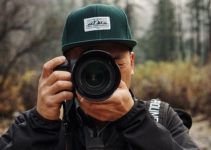
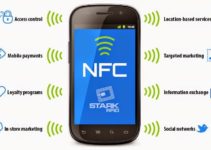
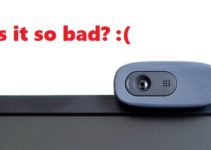
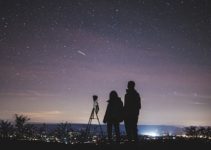
I looked at some other reviews and they were great for lots of detail, sometimes more than here, but they didn’t always tell me why something was important. Or why something maybe wasn’t.
If my kids want to get into this kind of thing, it seems that mobile phones don’t cut it yet.
Lots of good cameras didn’t make it to this list but I guess this is more about setting up examples of good cameras in different categories. I suppose you could have done a top ten of just SLR’s for example.
I sometimes struggle to get decent audio, so it would be useful to find out more.